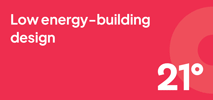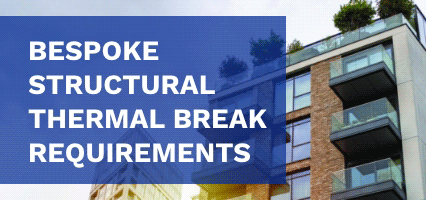Choosing the right Glass Staircase Balustrade solution
Glass Staircase Balustrades are a popular solution for both commercial and residential applications. Their popularity has increased over the years due to their sleek design and ability to let light flood into dark hallways and interior spaces.
The aesthetic benefits of using a glass balustrade solution are great; light ‘airy’ interior spaces, clean lines with minimal disruption on the eye, but what about the detail? Does the client want the ‘all glass’ appeal with the absolute minimum glass hardware on show, a frameless system or a post system?
Aesthetics are clearly an important requirement; however, the technical requirements and performance are key. So how do you design a stunning glass staircase that appeases clients’ requirements yet conforms with regulations, and what do you need to consider?
Here we speak with Gary Dean, Managing Director of ONLEVEL for some answers…
Glass Balustrades
There are two most common options for glass staircase designs – frameless balustrade systems or using a post system.
A popular third option is a ‘point fixed’ fixing method for attaching the glass against the main structure, also referred to as a standoff. These are relatively small discreet fixings that are often used for the ‘all glass’ look. (See the main image)
One of the first considerations in detailing a glass balustrade solution is location and the surface or substrate it’s to be fixed to. For example a hotel balcony with access from one side, a post or point fixed system is going to be more difficult to install than a frameless system that allows installation from just one side – removing the need for cherry picker access at high level.
Frameless glass balustrades provide unrestricted views. ‘Frameless’ systems use an unimposing aluminium base with a ‘U’ profile (base shoe or channel) to engage the glass. The glass is then fixed into place with plates or wedges (at approximately 300mm intervals) using a fixing tool to align glass which saves significant time. ONLEVEL offer its patented Flex-Fit system for fixing and adjusting glass balustrade panels. With this system it is possible to adjust each individual glass plate up to 40 millimetres toward and away from the perpendicular line.
Post fixed glass balustrade systems consist of glass panels, typically fixed in each corner by ‘D’ shaped or square glass clamps which screw (or weld) onto the posts. Although more glass hardware is on show with a post system, they are still a great option for allowing light to flow into a space. With post balustrade systems the posts and handrail can be designed as a key feature with numerous wooden posts, handrail and finishes available to create impressive looking spaces.
Glass Clamps – A changing marketplace
Glass hardware innovation specialists ONLEVEL created ‘Kronos’ the world’s first fully adjustable glass clamp. Kronos is a revolutionary new glass clamp that clamps glass securely, swiftly, via a simple ‘one piece’ connection. The innovative ‘one piece’ design means the clamp can be taken straight out of the box and fixed into place, removing the need to assemble/disassemble a traditional multi part clamp and tricky rubber gaskets.
The unique design means that just one clamp is required for all applications. Covers protect the whole surface and ensure a sleek smooth professional look from both sides of the clamp.
Planning
Whether you are working on a new build home, retrofit hotel or refurbishment of an office ensuring safe, reliable glass balustrades and achieving the right look can be a tricky process.
Gary Dean comments: “Choosing the right glass balustrade solution can be a complex task, however here at ONLEVEL we have a great team with loads of experience, all willing to provide advice on getting your project completed as easily as possible.”
Gary continues; “We always recommend integrating your glass balustrade staircase designs early into your design concepts, no matter what the project type. Each project is different but early planning is key, with the relevant information we can help and advise you on the right solution and avoid any last-minute problems”
Commonly, refurbishment projects need a little more focus on detailing to ensure your glass staircase balustrade not only looks great, but is fit for purpose and works seamlessly with the existing structure and any changes the building has endured over the years.
Key consideration: UK Building Regulations; glass balustrades
The main purpose of a glass balustrade is to provide a protective barrier to shield against a change in floor level or a drop. For residential buildings (single and multi-occupancy), a glass balustrade is required when the difference in floor level is great than 600mm. For non-residential buildings, the criteria is when the floor level change is more than 380mm or on staircases with more than two levels.
Refer to UK Building Regulations – Approved Document K for the Protection from Falling, Collision and Impact, and BS 6180:2011 Issued by the British Standards Institution (BSI) specify a code of practice for protective barriers in and around buildings, which is well documented in ONLEVEL’s information and testing materials.
Always seek specialist advice when determining the correct load factors for your glass balustrade installation.






